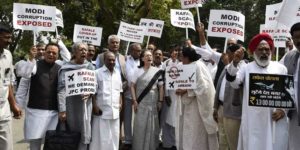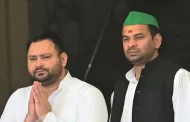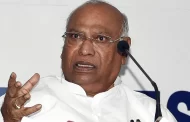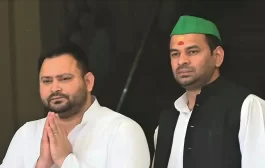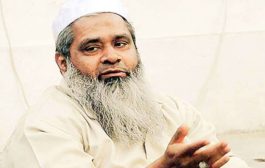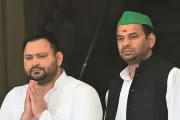The result of the Rajya Sabha deputy chairman’s election was no surprise. Coming close on the heels of the No Confidence Motion defeat in the Lok Sabha, it looked like yet another self-goal by Rahul Gandhi. In both the floor tests, the NDA managed to garner more votes than its official strength, indicating that an Opposition alliance is still far from a done deal.
Two parallel processes seem to be playing out in the political scene at this juncture. On one axis, Rahul Gandhi is trying to establish his primacy in the Opposition lineup, while signalling that he may not be averse to yielding space to another worthy claimant in the larger interest of keeping BJP out, as he did in Karnataka. Simultaneously, regional stalwarts like Mamata Banerjee, Mayawati, Sharad Pawar, HD Deve Gowda and Chandrababu Naidu are making their own numbers irrespective of the Congress. For most of them, being close to their ‘sell by date’, this is a ‘now or never’ election. On more than one occasion, they have made it clear that Rahul cannot take the numero uno position for granted.
Both the Congress and rest of the Opposition are banking on anti-incumbency against Narendra Modi and the BJP. Rahul never tires of repeating that he sees nothing but anger against Modi everywhere. His attacks against Modi have, therefore, become sharper and shriller. He is clearly positioning himself as Modi’s main challenger in 2019.
The regional parties have a more straightforward equation based on arithmetic of caste, community and sub-nationalism. The last is particularly relevant in the southern states, where there is a Coromandel Convergence of resurgent Dravidian pride as it were.
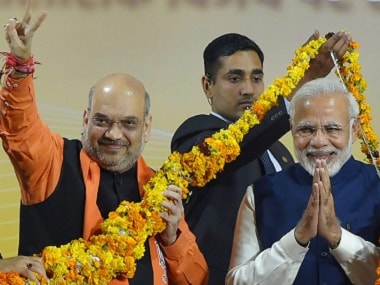
Since the past four decades, the Emergency of 1975 has become a pet analogy for all out of power politicians. Ironically, even Indira Gandhi had accused the Janata Party of putting the country under an ‘undeclared emergency’ soon after it assumed office.
A few days ago, Sharad Pawar, one of the main movers of Opposition unity, claimed a similar mahaul of fear was prevalent in the country predicting a deja vu of 1977 in the next election. Eminent historian Ramachandra Guha tweeted: “If Sanjay Gandhi was the nemesis of Indira Gandhi then, Amit Shah will be the cause of Narendra Modi’s undoing now”.
The views of a senior leader like Pawar, a veteran of many battles, cannot be dismissed as bogey. Yet, there is a catch. In 1977, from reports in the media, which was under total censorship, no one would have guessed there was so much pent-up emotion waiting to explode inside the ballot boxes. In contrast, going by a sizable chunk of the media narrative today, it would appear the prospects Modi’s return are indeed bleak (so much for the freedom of the press). But, unlike in 1977 when anger was palpable to anyone travelling through the country, especially the “Hindi heartland”, there is no substantive evidence to suggest such a strong anti-Modi sentiment at the grassroots.
If the BJP is rattled, it is certainly not showing. It is unlikely that Modi and Shah will not remember Indira Gandhi’s grand fall or the lessons of 2004 when BJP’s “India Shining” campaign flopped. So, they too must have a strategy and road map prepared for 2019, which they are yet to reveal. Although some would like to believe Modi and Shah had begun to take their allies for granted inadvertently pushing them towards the Opposition, those who know them well will not buy such a theory. They would have not only factored the reactions of the TDP and Shiv Sena, for instance, but perhaps, also egged them in that direction with a certain endgame in mind.
It is this complex and multilayered landscape that makes the battle for 2019 fascinating unlike the binary choices of 1977 or 2014. The dilemma of the Opposition would be whether to turn it into an election of Modi versus the Rest or fight their individual wars hoping that the sum will be greater than the parts. Rahul and the Congress are clearly trying to push towards the former. Donning the avatar of an overage JNU hosteler rent-a-cause protester, he is targeting Modi with direct and personal salvos on a broad spectrum of issues ranging from crony capitalism, defence scams, mismanagement of the economy, lack of jobs and, finally, security of minorities and women. This strategy assumes general disenchantment with Modi among the middle and higher income groups. There is the rub.
Over the years, the definition of middle class has changed significantly in the country. The group Rahul is trying to address through his spunky quips on social media and strident rhetoric in Parliament have actually moved up on the socioeconomic ladder. The real middle class today lives in the suburbs, small towns and urban areas, who may not be too impressed by his adolescent rants.
The rich are by definition politically agnostic. They are guided purely by self-interest. Much as corporate India may be cut-up with Modi, it also has greater faith in his ability to steer the country towards growth and stability.
This is reflected by statistics of corporate donations that the BJP has received in the past few months which is more than nine times over what the Congress is reported to have collected. The allies understand this. Therefore, they are focused more on their local agenda while working on a loose coalition that leaves enough room for adjustments later as the situation evolves. Unlike an adolescent Rahul who is prone to peaking early and prematurely spilling his beans.
It is in the BJP’s interest to keep this dynamic tension alive, while Shah and the RSS quietly go about their job of moving the chess pieces. No one knows better than them that in a “wave” all calculations become irrelevant. So, they will do their best to ensure that a mahaul against Modi does not acquire momentum till the prime pinister is ready to roll out his blitzkrieg in a fight to finish at the grand sweepstakes of 2019.
source: Firstpost.com

